
|




|

|
|

|
The field identification of Needham's Skimmer (Libellula needhami) (right) and Golden-winged Skimmer (Libellula auripennis) (next shot) is sometimes a little confusing for those relatively new in the field study of odonates or for those who do not know the two species in question. I am putting together a few identification hints that may help to make identifications a little easier. It should be remembered, however, that these two species are very similar in appearance and some individual insects may confound a person trying to tell them apart. The geographic ranges of the two species across the southeastern U.S. are similar, but Needham's is often, but not always, found closer to the coast. A mature male Needham's is on the right while a mature male Golden-winged is in the next shot. A mature male Needham's Skimmer tends to average more red and less orange, while the opposite would be true for a mature male Golden-winged. There is, however, great variation in color intensity within the two species. Nothing new is described here but rather I am showing some illustrations that may be of help to some folks. |
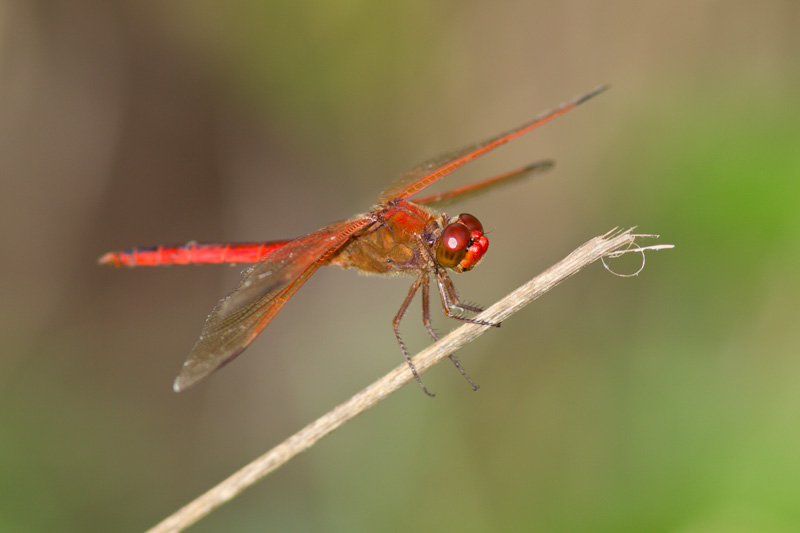 |
| Later I will discuss some identification characteristics for females and younger individuals, but at present I'll stick with mature males. A very good field character, at least for me, is leg color. Needham's tend to have brown legs, while Golden-winged Skimmers tend to have more blackish legs, especially notable on the upper half of the rear set of legs. This can be seen in the first two shots. The leg color difference hold true for both sexes and all ages. This ID character is described in Dragonflies of the East by Dennis Paulson as well as Dragonflies of North America by Needham, Westfall and May, which is a scholarly text and often used for keys for specimen ID in museums. See next image for more information. | 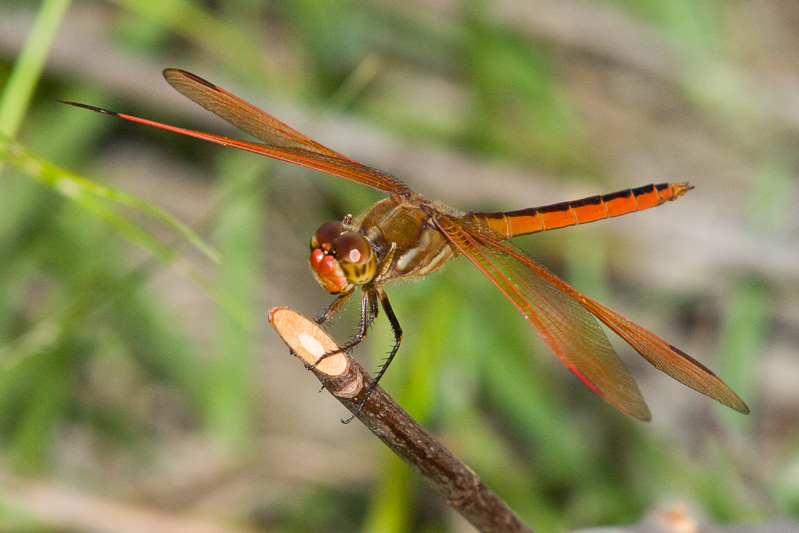 |
| I have found this leg color to hold true in all of my own photos taken over a 12 year period in many areas of the southeastern United States as well as in photos in various published references. With a reasonable look, or in a decent photo, the leg color seems to be quite discernible on most individuals. Dennis Paulson added the following comments "There is a difference in costal vein color, which I find very useful in all but the brightest adult males, and I can usually see the difference even in those. Then in the mature males I think the uniform distribution of orange in the wings in Golden-winged (because all or most of the veins are bright orange) and its concentration more on the anterior parts of the wings in Needham's (I guess because the more posterior veins are a duller or darker orange) is a pretty good character." | 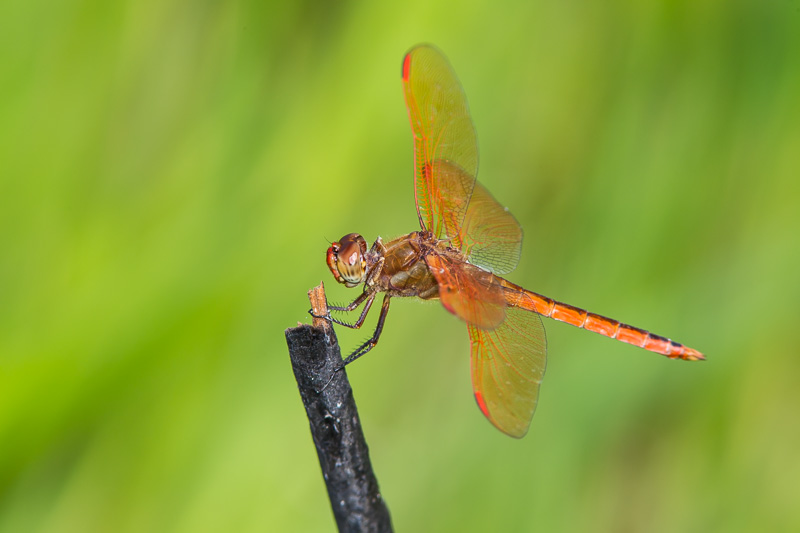 |
| Females and young male Needham's and Golden-winged Skimmers are easier to tell apart than mature males. The shot to the right and the next one show Golden-winged Skimmers. Note the blackish upper legs as discussed above. Note also the dark front area of the thorax in these two shots. This dark area is bordered on the side of the thorax by a pale or whitish area that runs in a more or less straight line from under the wings to the base of the front legs. In other words, the pale area on the side of the thorax does not intrude into the dark area on the front of the thorax. I believe this will hold true on any female or young male Golden-winged Skimmer. I have examined many specimens in the U.T. insect collection as well as many photos and have not found an example where this was untrue. Now go two shots forward. |  |
| Golden-winged Skimmer | 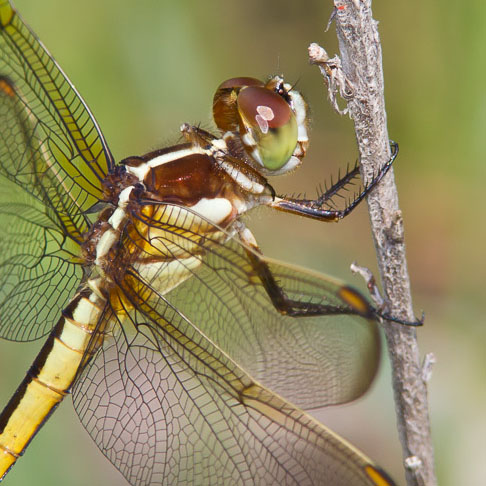 |
| The next two shots show Needham's Skimmer. Note how the pale area on the side of the thorax intrudes into the darker area on the front of the thorax. I've indicated this with a blue arrow. Paulson describes this well as a pale "thumb" that extends forward to the front of the thorax. Again, note the brown, not blackish upper legs as discussed above for Needham's. As with Golden-winged, I have examined many specimens as well as many photos and this character holds true. | 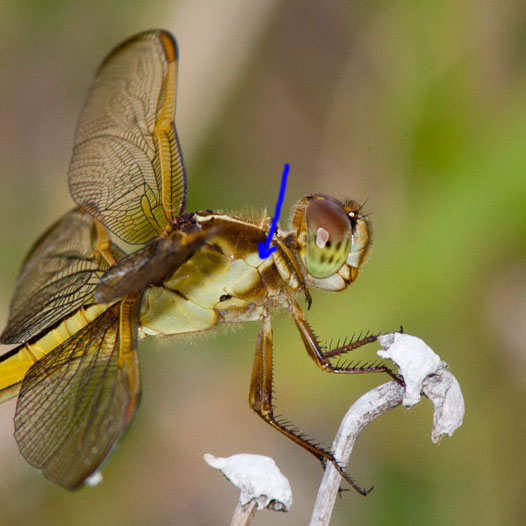 |
Needham's Skimmer |
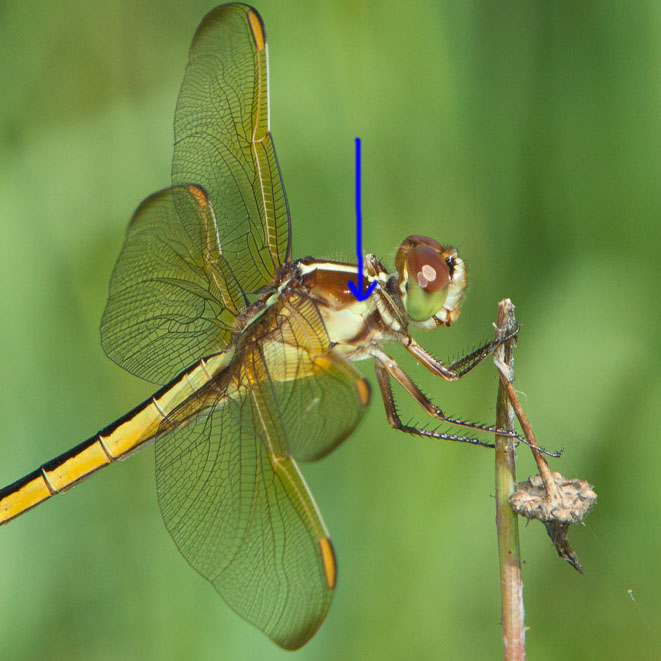 |
| On the right is a male Needham's that is not fully mature. Note that the pale "thumb" on the side of the thorax discussed above is still visible. On mature individuals this seems to be far less obvious, but the leg color difference is still evident. | 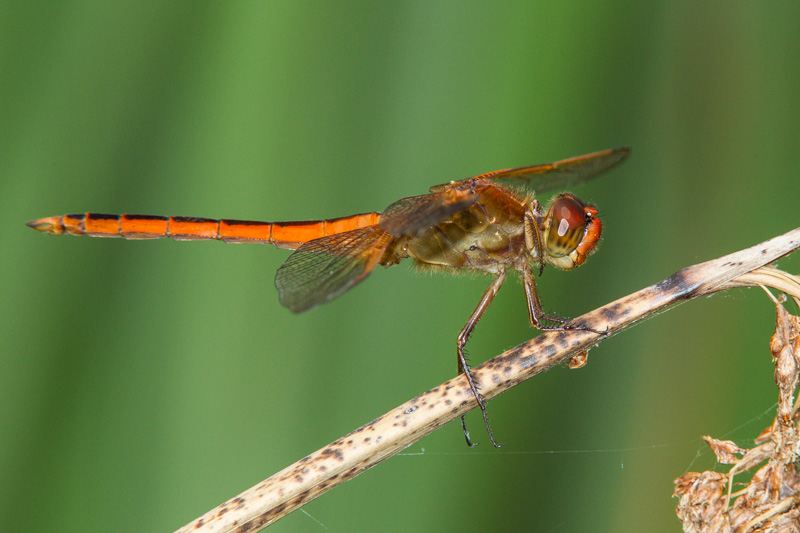 |
On the right is a fully mature male Needham's Skimmer. Note the brownish upper legs and perhaps the hint of the pale thumb on the side of the thorax. |
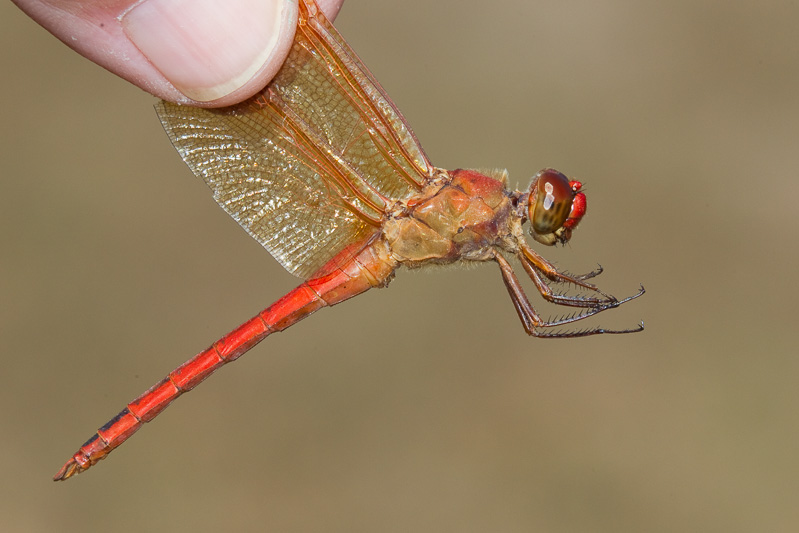 |
A mature male Golden-winged Skimmer, showing blackish upper legs. Finally, Needham's tends to be more of a coastal species in general than is Golden-winged. I've seen Needham's on the edge of coastal salt marsh near the Gulf of Mexico, but have personally never seen Golden-winged in such a habitat. Needham's, however, may turn up well inland and there are numerous records in central Texas, northeast Texas, northern Louisiana and southern Arkansas. I hope that I have provided some illustrations here that may simply serve as an aide to field identification, keeping in mind that to ID a dragonfly conclusively may require in hand specimen examination. Photographers should strive to get good lateral photos which would be helpful to identify any questionalbel dragonfly. Dorsal views are not very helpful in many cases. I'd like to thank Paul Bedell, Dennis Paulson, and Eric Isley for helpful comments about the identification of these two species. |
 |
